Time: 1536
Place: Windsor and London
Act 1
Scene One: Night. Windsor Castle, Queen's apartments
Courtiers comment that the queen’s star is setting, because the king’s fickle heart burns with another love.
Jane Seymour enters to attend a call by the Queen; Anna enters and notes that people seem sad. The queen admits to Jane that she is troubled. At the queen’s request, her page Smeaton plays the harp and sings in an attempt to cheer the people present. The queen asks him to stop. Unheard by any one else, she says to herself that the ashes of her first love are still burning, and that she is now unhappy in her vain splendor. All leave, except Jane.
Henry VIII enters and tells Jane that soon she will have no rival, that the altar has been prepared for her, and that she will have husband, sceptre, and throne. Each leaves by a different door.
Scene Two: Day. Around Windsor Castle
Lord Rochefort, Anna’s brother, is surprised to meet Lord Richard Percy, who has been called back to England from exile by Henry VIII. Percy asks if it is true that the Queen is unhappy and that the King has changed. Rochefort answers that love is never content.
Hunters enter. Percy is agitated at the prospect of possibly seeing Anna, who was his first love. Henry and Anna enter and express surprise at seeing Percy. Henry does not allow Percy to kiss his hand, but says that Anna has given him assurances of Percy’s innocence but she still has feelings for Percy. Henry VIII tells Hervey, an officer of the king, to spy on every step and every word of Anna and Percy.
Scene Three: Windsor Castle, close to the Queen's apartments
Smeaton takes a locket from his breast containing Anna’s portrait. He has stolen it and has come to return it. He hears a sound and hides behind a screen. Anna and Rochefort enter. Rochefort asks Anna to hear Percy. Then he leaves. Smeaton peeps out from behind the screen, but cannot escape. Percy enters. Percy says that he sees that Anna is unhappy. She tells him that the king now loathes her. Percy says that he still loves her. Anna tells him not to speak to her of love. Before leaving, Percy asks whether he can see Anna again. She says no. He draws his sword to stab himself, and Anna screams. In the mistaken belief that Percy is attacking Anna, Smeaton rushes out from behind the screen. Smeaton and Percy are about to fight. Anna faints, and Rochefort rushes in. Just then, Henry VIII enters and sees the unsheathed swords. Summoning attendants, he says that these persons have betrayed their king. Smeaton says that it is not true, and tears open his tunic to offer his breast to the king for slaying if he is lying. The locket with Anna’s portrait falls at the king’s feet. The king snatches it up. He orders that the offenders be dragged to dungeons. Anna says to herself that her fate is sealed.
Act 2
Scene One: London. Antechamber of the Queen's apartments
The guards note that even Jane Seymour has stayed away from Anna. Anna enters with a retinue of ladies, who tell her to place her trust in heaven. Hervey enters and says that the Council of Peers has summoned the ladies into its presence. The ladies leave with Hervey. Jane enters and says that Anna can avoid being put to death by admitting guilt. Anna says that she will not buy her life with infamy. She expresses the hope that her successor will wear a crown of thorns. Jane admits that she is to be the successor. Anna tells her to leave, but says that Henry VIII alone is the guilty one. Jane leaves, deeply upset.
Scene Two: Antechamber leading into the hall where the Council of Peers is meeting
Hervey tells courtiers that Anna is lost, because Smeaton has talked and has revealed a crime. Henry VIII enters. Hervey says that Smeaton has fallen into the trap. Henry VIII tells Hervey to continue to let Smeaton believe that he has saved Anna's life. Anna and Percy are brought in, separately. Henry VIII says that Anna has made love to the page Smeaton, and that there are witnesses. He says that both Anna and Percy will die. Percy says that it is written in heaven that he and Anna are married. They are led away by guards.
Jane enters. She says that she does not want to be the cause of Anna's death. Henry VIII says that she will not save Anna by leaving. Hervey enters and says that the Council has dissolved the royal marriage and has condemned Anna and her accomplices to death. Courtiers and Jane ask the king to be merciful. He tells them to leave.
Scene Three: Tower of London
Percy and Rochefort are together in their cell. Hervey enters and says that the king has pardoned them. They ask about Anna. Hearing that she is to be executed, they choose to be executed also. They leave, surrounded by guards.
In Anna's cell, a chorus of ladies comment on her madness and grief. Anna enters, she imagines that it is her wedding day to the king. Then she imagines that she sees Percy, and she asks him to take her back to her childhood home (Donizetti used the theme from the English/American song Home Sweet Home as part of Anna’s Mad Scene to underscore her longing). Percy, Rochefort and Smeaton are brought in. Smeaton throws himself at Anna's feet and says that he accused her in the belief that he was saving her life. In her delirium, Anna asks him why he is not playing his lute. The sound of cannon is heard. Anna comes to her senses. She is told that Jane and Henry VIII are being acclaimed by the populace on their wedding day. Anna says that she does not invoke vengeance on the wicked couple. She faints. Guards enter to lead the prisoners to the block. Smeaton, Percy and Rochefort say that one victim has already been sacrificed.
Place: Palace of Westminster, London and Fotheringhay Castle, Northamptonshire, England.
Time: The year 1587.
Act 1
Scene 1: Elisabetta's court at Westminster
The Lords and Ladies of the Court enter after a tournament to honor the French ambassador, who has brought a marriage proposal to Queen Elizabeth from the Dauphin François. They express their joy as Elizabeth enters. She considers the proposal, one which would create an alliance with France, but she is reluctant to give up her freedom and also pardon her cousin Mary Stuart, the former Queen of Scots, whom she has imprisoned because of various plots against her throne (Cavatina: Ahi! quando all'ara scórgemi / "Ah! when at the altar a chaste love from heaven singles me out"). Elizabeth expresses her uncertainty while at the same time, Talbot and the courtiers plead for Mary's life (Cabaletta: Ah! dal Ciel discenda un raggio / "Ah! may some ray descend from heaven").
Just as Elizabeth inquires where Leicester is, he enters and Elizabeth tells him to inform the French ambassador that she will indeed marry François. He betrays no signs of being jealous, and the Queen assumes that she has a rival.
Alone with Leicester, Talbot reveals to him that he has just returned from Fotheringay and gives a letter and a miniature portrait of Mary. Joyously, Leicester recalls his love for Mary (Aria of Leicester, then duet with Talbot: Ah! rimiro il bel sembiante / "Ah! Again I see her beautiful face"). Talbot asks what he intends to do and Leicester swears to try to free her from her imprisonment (Vuò liberarla! Vuò liberarla! / "I want to set her free").
Talbot leaves and, as Leicester is about to do so, Elizabeth enters. Clearly knowing what has gone on between the two men, she questions him, asks about a letter from Mary, and then demands to see it. Reluctantly, Leicester hands it over, noting that Mary has asked for a meeting with her cousin and he pleads with the Queen to agree to do so. Also, upon her questioning, he confesses his love for Mary (Duet of Leicester and Elizabeth: Era d'amor l'immagine / "She was the picture of love"). Told that Elizabeth can join a hunting party on the estates where Mary is imprisoned, she agrees to the meeting, albeit with revenge on her mind (Cabaletta to the duet: Sul crin la rivale la man mi stendea / "Over my head my rival stretched out her hand").
Scene 2: Fotheringay Castle
[In many modern performances this scene is called Act 2, with the final act becoming Act 3. Donizetti scholar William Ashbrook in Grove Dictionary notes that the opera is "in two or three acts".]
Mary reflects on her youth in France with her companion, Anna (Cavatina: Oh nube! che lieve per l'aria ti aggiri / "Oh cloud! that wanders light upon the breeze"). The sounds of a royal hunt are heard and, hearing the hunters cry out that the Queen is close by, Mary expresses her disgust (Cabaletta: Nella pace del mesto reposo / "In the peace of my sad seclusion, she would afflict me with a new terror"). To her surprise, Leicester approaches and warns Mary of Elizabeth's imminent arrival, counseling her to behave humbly towards the Queen, who is then despondent (Duet: Da tutti abbandonata / "Forsaken by everyone… my heart knows no hope"). But assuring Mary that he will do whatever is necessary to obtain her freedom, Leicester leaves her to meet Elizabeth. He then attempts to plead with the Queen for her forbearance.
When Mary is brought in by Talbot, Elizabeth reacts with hostility (È sempre la stessa: superba, orgogliosa / She is always the same, proud, overbearing") and, after each character collectively expresses his or her feelings, Mary approaches and kneels before the Queen (Aria: Morta al mondo, ab! morta al trono / "Dead to the world, and dead to the throne… I come to beg your pardon"). The confrontation soon becomes hostile. Elizabeth accuses Mary of having murdered her husband, Lord Darnley, as well as acts of treason and debauchery, all the while Leicester attempting to calm both sides. Stung by Elizabeth's false accusations, Mary calls her the Figlia impura di Bolena ("Impure daughter of Boleyn") and continues with the final insult: Profanato è il soglio inglese, vil bastarda, dal tuo piè! ("The English throne is sullied, vile bastard, by your foot"). Elizabeth is horrified and demands that the guards take Mary away, declaring "The axe that awaits you will show my revenge". Mary is returned to captivity.
Act 2
Scene 1: A room in Elisabetta's apartments
Cecil enters with the death warrant and attempts to persuade her to sign it. While she hesitates, Elizabeth contemplates the situation (Aria: Quella vita a me funesta / "That life, so threatening to me"). Cecil urges her to sign it "so that every ruler will know how to pardon you for it" and, as she is about to do so, Leicester arrives. Seeing him, Elizabeth exclaims "you are hastening the execution" and signs the death warrant. Leicester pleads for mercy, Elizabeth rejects the plea, and Cecil urges her to remain firm (Trio Deh! per pietà sospendi l'estremo colpo almeno / "Alas! For pity's sake spare the final blow at least"). The confrontation ends with Elizabeth holding firm despite Leicester's accusations of cruelty; she orders him to witness Mary's execution.
Scene 2: Maria's room
Mary contemplates her fate, and that of Leicester also: "I have brought misfortune to all". Talbot and Cecil enter and Cecil tells Mary that he holds her death warrant. After Cecil leaves the room, Talbot informs her that Leicester has been ordered to witness her execution. Beside herself with grief, Mary imagines that the ghost of Lord Darnley is in the room with her, while Talbot offers comfort (Duet: Quando di luce rosea il giorno a me splendea / "While with the light of dawn my life still sparkled"). However, Talbot then presses her about "one more sin": her "unity with" ("uniti eri") Babington, to which she initially responds "Ah! be silent; it was a fatal error", but, when he insists, adds that "dying my heart affirms it."
Scene 3: The courtyard at Fotheringay
People gather at the site of the execution, lamenting that a queen's death will bring shame upon England. Mary enters and says her farewells to the crowd, which includes Talbot, telling them she will be going to a better life. She calls them to a final prayer (Mary, with Chorus: Deh! Tu di un úmile preghiera il suono odi / "Ah! May Thou hear the sound of our humble prayer") and, together, she and the crowd pray for God's mercy. When Cecil arrives to tell her that the time for her execution has come, he informs her that Elizabeth has granted her final wishes, including allowing Anna to accompany her to the scaffold. Then Mary offers a pardon to the queen (Mary, Anna, Talbot, Cecil, chorus: Di un cor che more reca il perdóno / "From a heart that is dying, may pardon be granted"). Leicester comes to bid her farewell. Both are distraught and he expresses outrage. Mary asks him to support her at the hour of her death and protests her innocence once again (Aria: Ah! se un giorno da queste ritorte / "Ah! Though one day from this prison your arm wanted to abduct me, now you lead me to my death"). She is then led to the scaffold.
Place: London, England
Time: 1601, during the reign of Queen Elizabeth I
Robert Devereux, 2nd Earl of Essex, favorite of Queen Elisabeth, has been removed from office as Governor of Ireland because, acting on his own initiative, he has agreed to a ceasefire with the rebels. Following an attempted uprising, he is awaiting his trial for high treason in London.
Act 1
Scene 1: The Great Hall at Westminster
Sara, Duchess of Nottingham, is trying in vain to hide her tears from the eyes of the Court, as she reads the sad story of Fair Rosamond, the unfortunate lover of King Henry II of England, and therein recognizes a very similar situation to her own. She is in love with Robert Devereux, her husband's closest friend. The Ladies of the court express concern, but she replies that she is happy, while privately revealing her sadness (All'afflitto è dolce il pianto). Elizabeth enters and states that, at the insistence of Nottingham, she has agreed to see Robert once again, now that he has returned from Ireland accused of treason (Duchessa..Alle fervide preci). The Queen is willing to release him without charges if she can be sure of his continued loyalty. To Sara's gradual dismay, the Queen reveals her love for Robert (L'amor suo mi fe' beata). Cecil enters and announces that Parliament is waiting for an answer from the Queen regarding the charges against Robert, since it considers her as being too lenient towards him, but she refuses to sign the death warrant proposed by the Royal Council.
Robert enters and, in a conversation overheard by the increasingly distraught Sara, Elizabeth declares her love for him. Now alone together, Elizabeth promises Robert that the ring she once gave him will always be the pledge of his safety should he ever return it to her. The dream of bygone happy days is shattered by an inappropriate comment by Robert, who assumes that Elizabeth knows the secret of his love for Sara. The Queen, increasingly jealous, demands that Robert name the woman he loves. He denies that he loves anyone (Nascondi, frena i palpiti), and then the Queen leaves.
Nottingham, Robert's friend and supporter, enters and the two men discuss Robert's situation and Nottingham's concerns about his wife's behaviour after he has observed her embroidering a blue shawl (Forse in quel cor sensible, Qui ribelle ognum ti chiama). The two men are interrupted by Cecil demanding that Nottingham attend a meeting of the Peers of the Realm.
Scene 2: Sara's Apartments at Nottingham House
Sara is alone when Robert enters, declaring her to be faithless because she has married Nottingham while he was in Ireland. She defends herself saying that it was the Queen's idea and that she was forced to do her bidding. At the same time, seeing the ring on Robert's finger, she assumes it to be a love token from the Queen, and tells him that they must never see each other again, giving him the blue shawl as a love token. In a final duet (Dacchè tornasti, ahi misera) each declares love for the other and they accept that they must say goodbye. Robert makes plans to escape.
Act 2
The Great Hall at Westminster
The Queen approaches Cecil to find out what has been decided. Cecil declares that the sentence is death. The Queen, asking Raleigh why the whole process took so long, learns that Robert had a shawl in his possession which he resisted giving over. It is handed to her. Nottingham enters and pleads for Robert's life (Non venni mai si mesto), insisting that he is innocent, but the Queen continues to describe how she knows that Robert has been unfaithful and, when he is brought in, confronts him, showing him the scarf. Nottingham sees it as well and recognizes it. Furious, he declares that he will have vengeance; while at the same time, Elizabeth offers Robert his freedom if he reveals the name of her rival. He refuses and she signs the death warrant, announcing that a cannon shot will be heard as the axe falls. Nottingham fumes that the axe is not a suitable punishment.
Act 3
Scene 1: Sara's Apartments
Alone, Sara receives Robert's ring along with a letter from him. In it, he tells her to take the ring to Elizabeth and beg for mercy. Before she can leave, Nottingham arrives and reads the letter (Non sai che un nume vindice). Although she protests her innocence, he prevents her from leaving. They both hear the funeral march for Robert as he is led to the Tower, and Nottingham leaves to exact his revenge on Robert. She faints.
Scene 2: The Tower of London
In his cell, Robert ponders as to why it appears that his ring has not been received by the Queen. But he refuses to betray Sara (Come uno spirto angelico... Bagnato il sen di lagrime), and when Cecil arrives at the door of the cell, it is not to free Robert but to take him to his execution. He is led away.
Scene 3: The Great Hall at Westminster
Elizabeth is mournful about the pending death of her lover and wonders why Sara is not there to give her comfort (Vivi ingrato, a lei d'accanto). Cecil announces that Robert is on his way to the block, and Sara arrives disheveled. She gives Elizabeth the ring along with confessing her guilt at being the Queen's rival. In vain, the Queen tries to stop the execution, but they hear the cannon announcing Robert's death. After Nottingham has arrived, Elizabeth demands to know why he prevented the ring from being brought to her. He replies: "Blood I wanted, and blood I got!" Elizabeth is haunted by the headless corpse of Robert, and longs for her own death, announcing that James VI of Scotland (son of Mary Queen of Scots) will be king. Alone, she kisses Robert's ring.


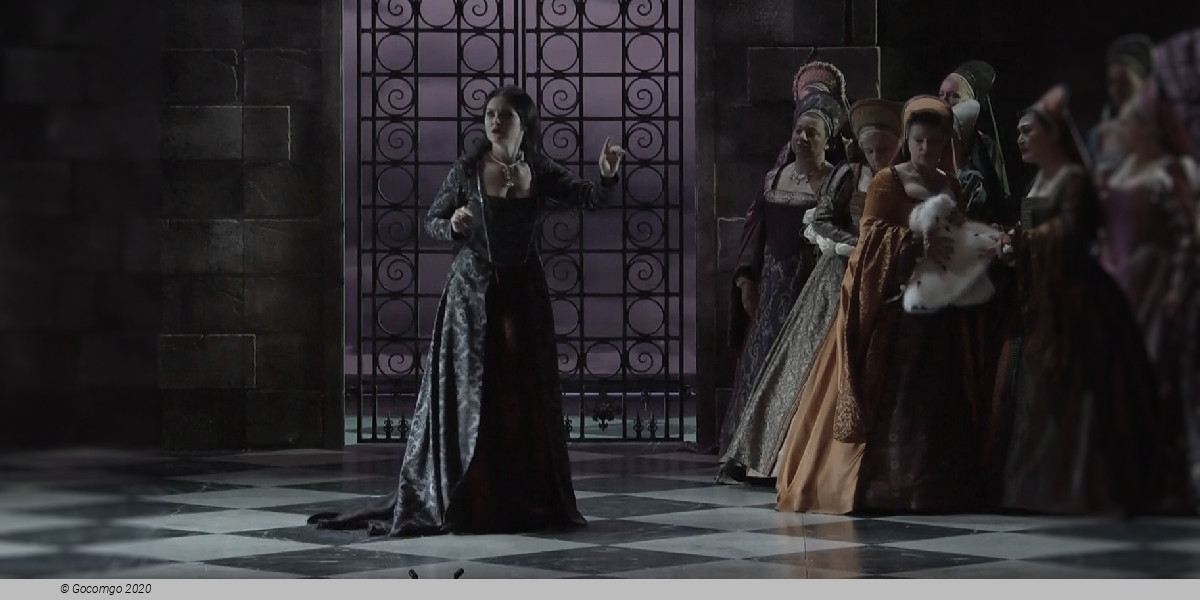

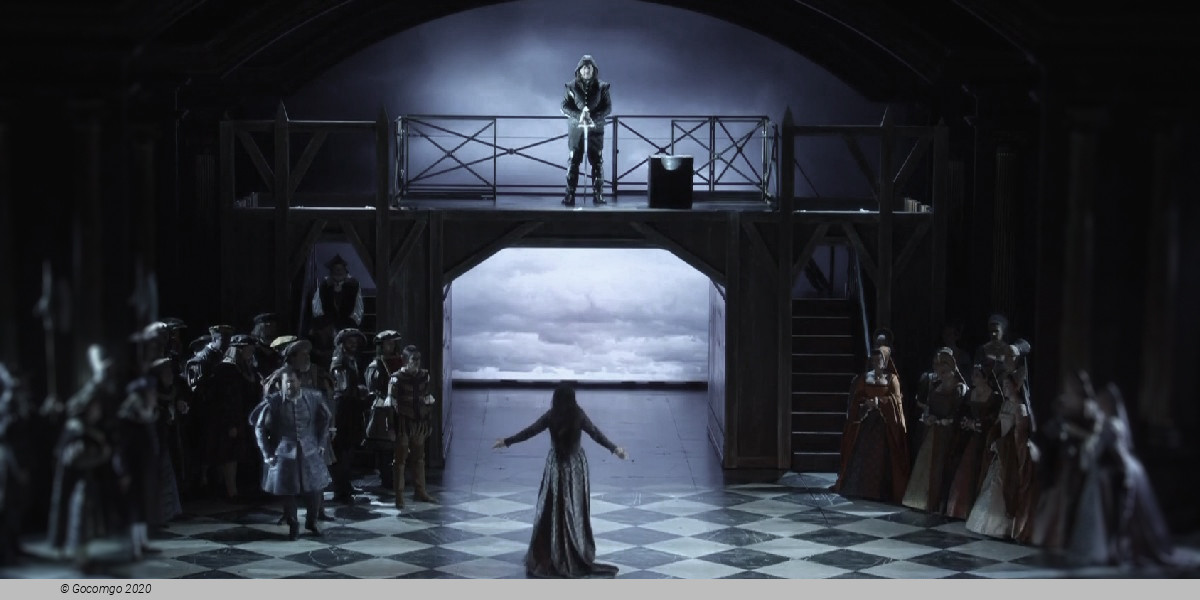
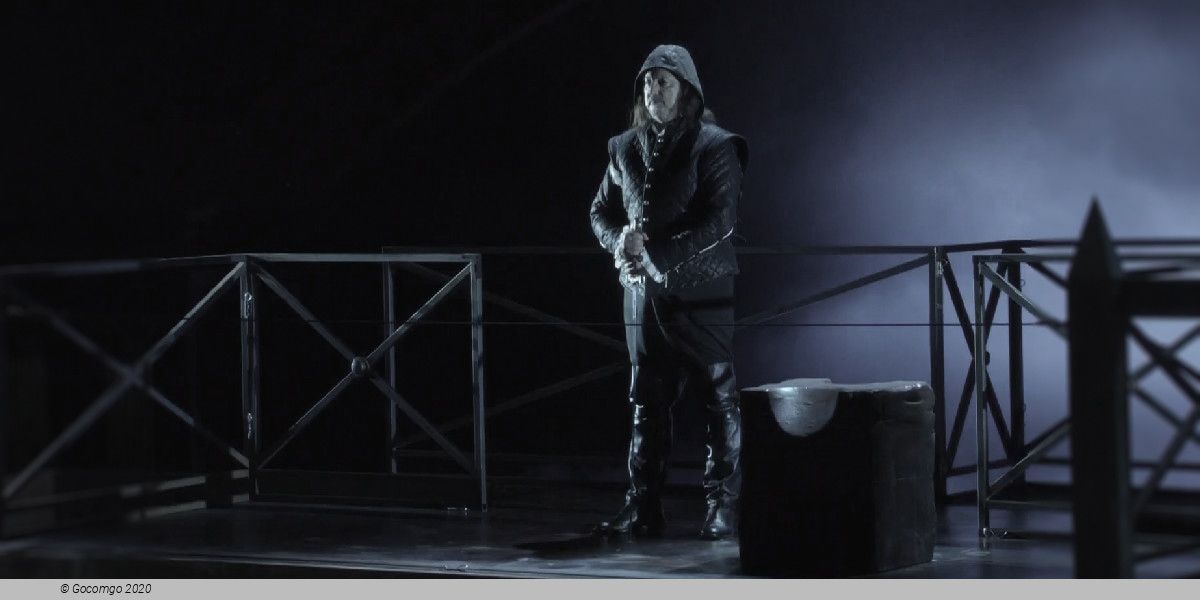

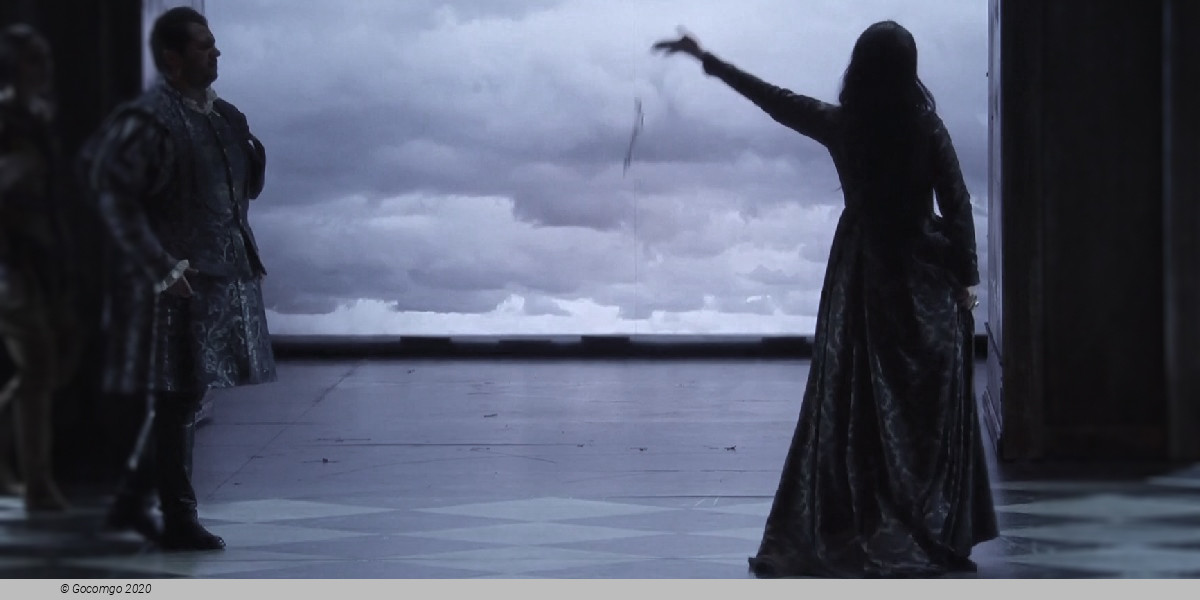


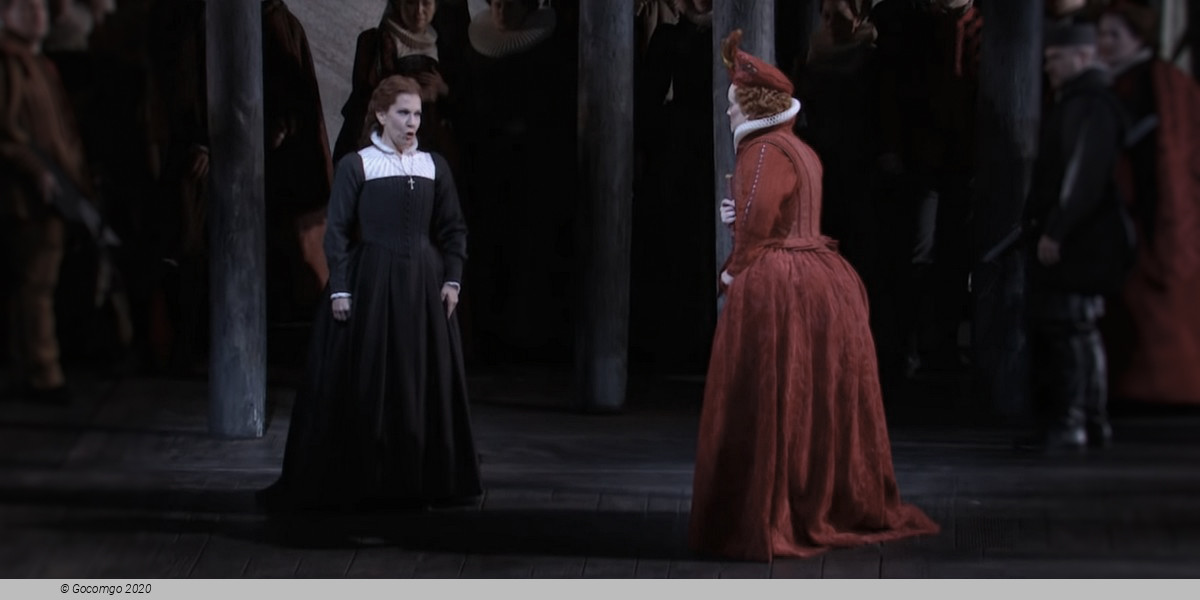
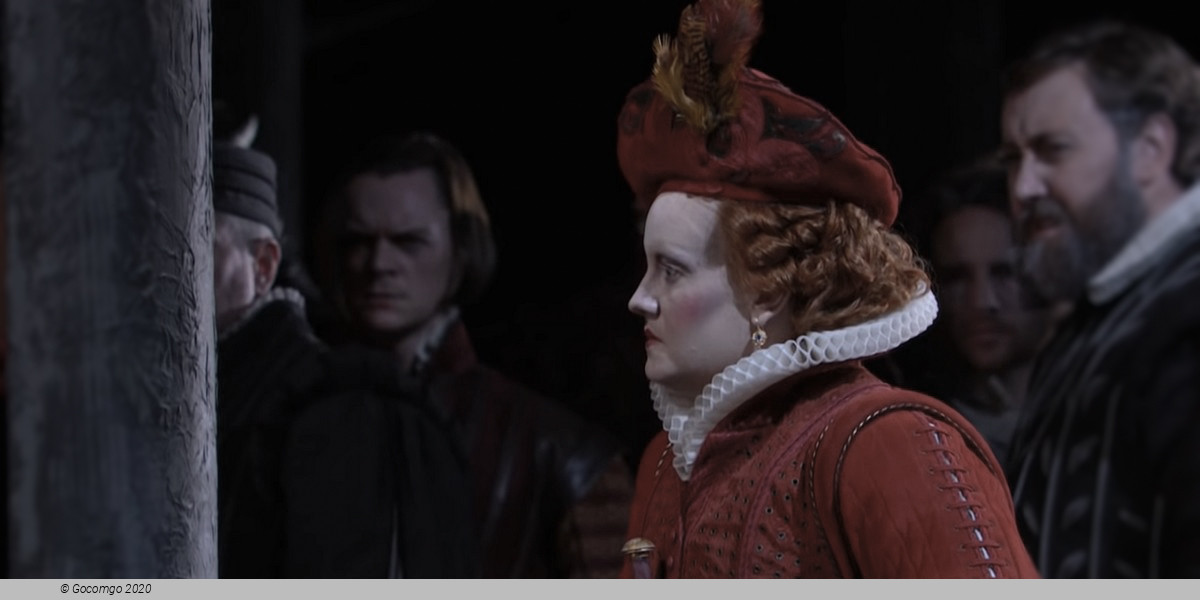
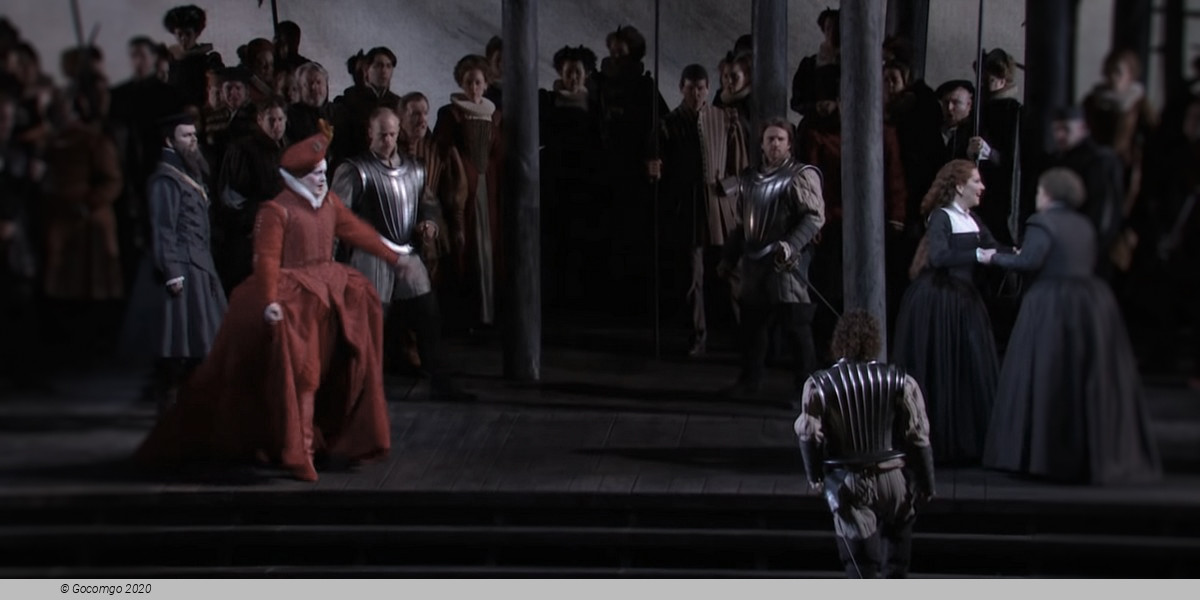
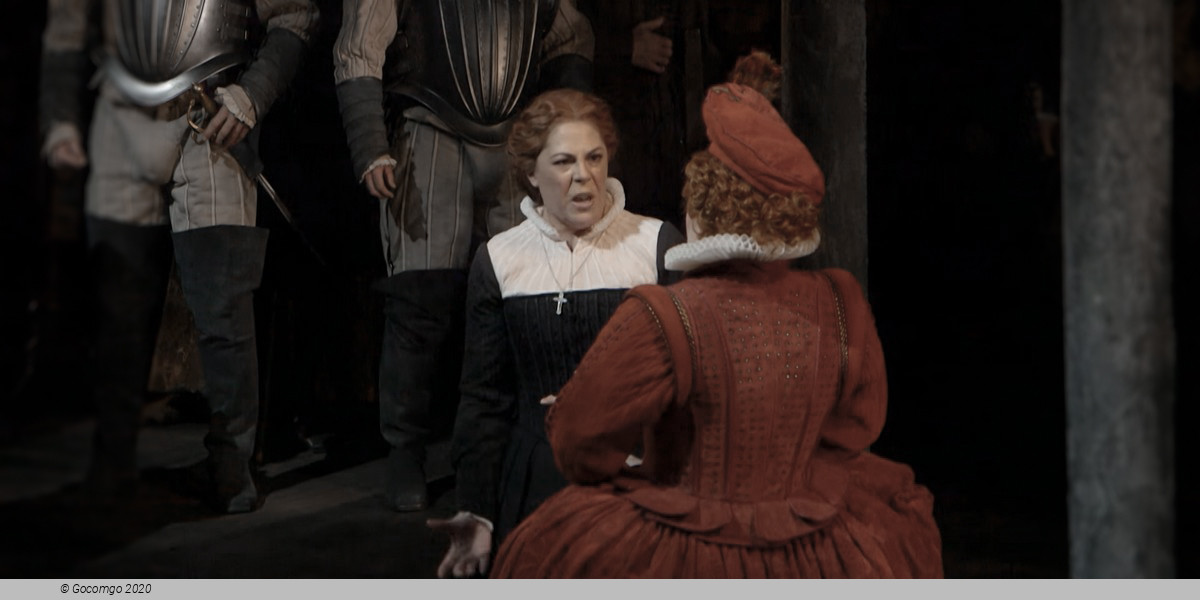
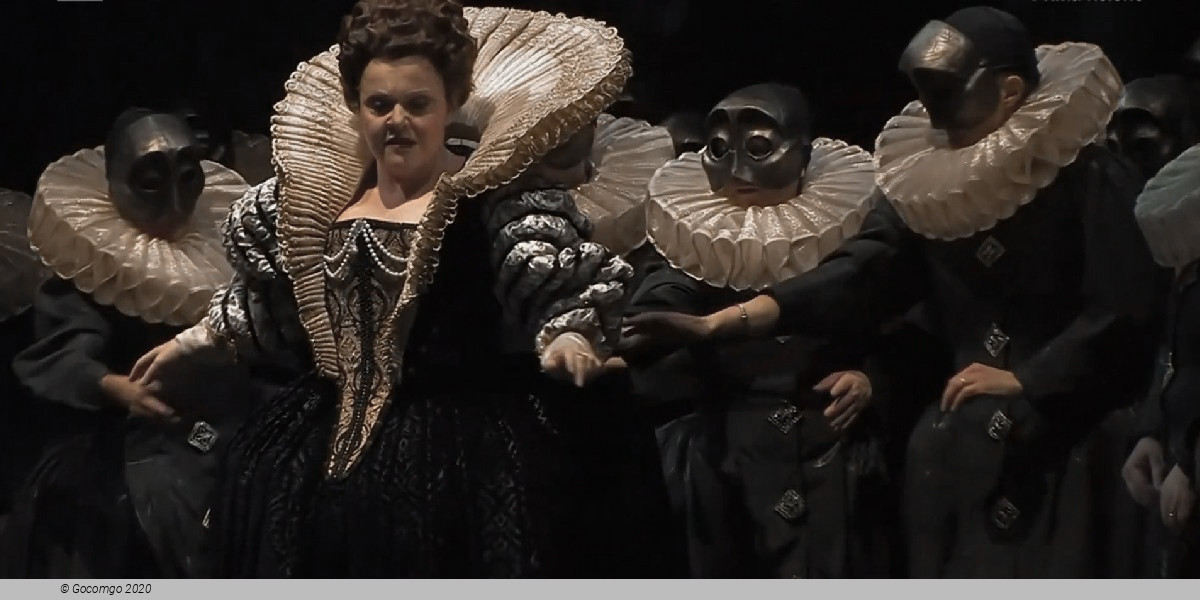
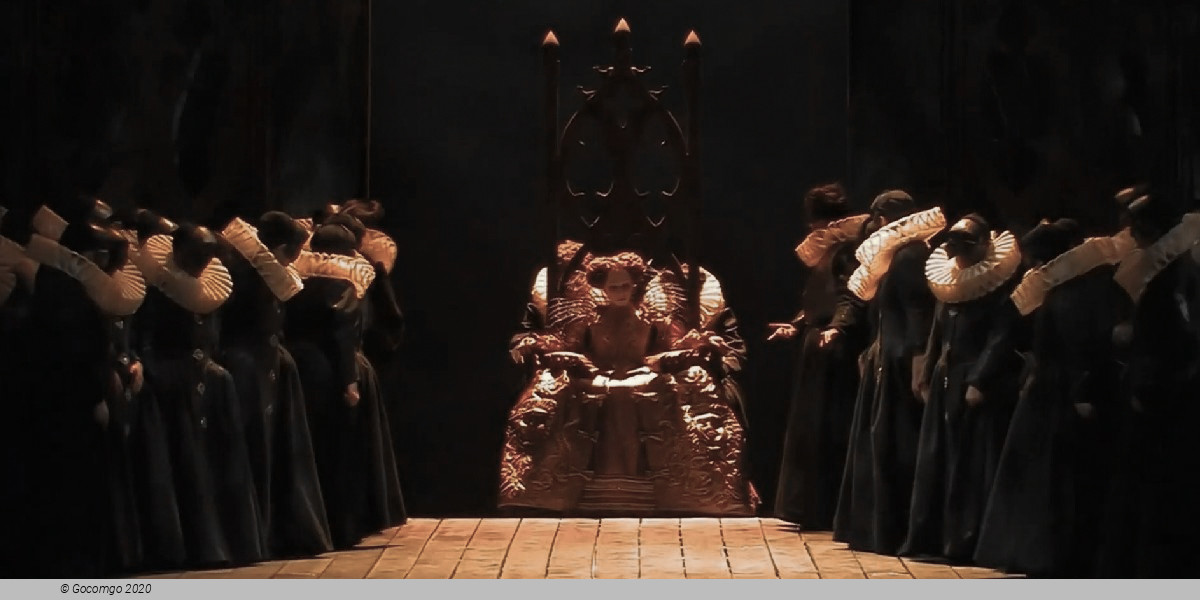



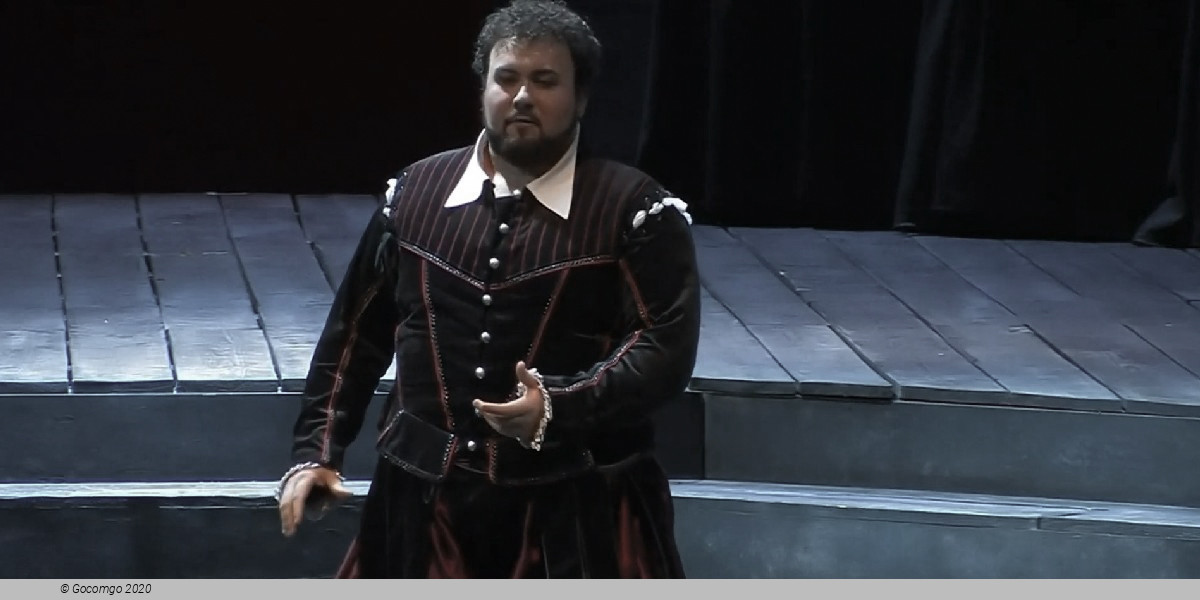

 20 North Wacker Drive
20 North Wacker Drive